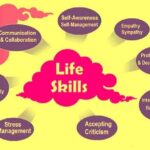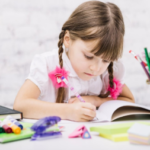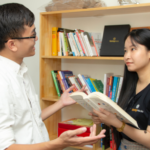Written by Russ Gadzhiev, PhD
“I’m not in this world to live up to your expectations and you’re not in this world to live up to mine.” – Bruce Lee
“Confidence is knowing who you are and not changing it a bit because of someone’s version of reality is not your reality.” – Shannon L. Alder
Peer pressure is the influence that members of the same social group exercise on one another. When we are talking about the members of the same group we usually imply that the people of these groups are of the same age, the same social standing, and status.
Schoolchildren and teenagers have an understandable desire to fit in and be accepted by their peers. They do not want to be ostracized or made fun of. In fact, this is the worst thing that they think may happen to them. That is why schoolchildren and teenagers are much more likely to succumb to negative peer pressure.
Negative peer pressure may manifest itself in a variety of forms. For example, a schoolchild may be pressured to skip school by their peers. Or he or she may be encouraged to bully their classmates. One of the most concerning situations when it comes to peer pressure is that young people may be encouraged to buy drugs or alcohol.
Problems That Schoolchildren and Teenagers May Face Because Of Peer Pressure
Because of negative peer pressure, teenagers may face various problems:
Anxiety & Depression
Negative peer pressure may lead to heightened anxiety and depression. That is understandable because the mere fact that someone is pushing us to do things that we don’t want may cause anxiety already. Unfortunately, few parents and teachers realize how powerful negative peer pressure can be.
Not Doing Well in School
Negative peer pressure may distract students from their studies. Indeed, some of the behaviours that a child or teenager may be pressured to engage in are potentially harmful to the psyche as they include drinking alcohol and abusing illicit substances. These are highly risky behaviours, and they may lead to a variety of disastrous consequences.
Self-Esteem & Confidence
Negative peer pressure may also negatively affect one’s self-esteem and self-confidence.
What Teachers Can Do to Help Students Manage Peer Pressure
Essentially, the main goal of helping schoolchildren and teenagers to be themselves and stay true to their values and beliefs as well as making them able to fit in their group. Here are some of the things that you can help your students with as a teacher:
Boost Student Confidence
Students with high levels of confidence are more likely to stay true to their values and not allow their peers to influence their decisions and actions.
Teach Students How to Respond
Talk to your students about the possible responses that they may give in situations where they experience negative peer pressure. If you are not sure what kind of advice you can give to your students, have a look at our Shiminly articles for more information. When trying to equip your students with techniques on how to deal with negative peer pressure you can, for example, encourage them to stop and think about the consequences of succumbing to peer pressure.
A child should stop and think: what will be the consequences of my agreeing to do the things my peers want me to? Will it hurt me or be bad for my health? Will it hurt anyone else? Will I get in trouble? Will I be breaking the rules of the school? Reflecting on these questions will let them make the right decision and, hopefully, resist negative peer pressure. You could also teach your child how to say no, firmly and without hesitation. Helping your child become more assertive will allow them to avoid trouble in the future.
Point Out Dangers
Talk to your students about the dangers of certain kinds of behaviours. Solid knowledge about the harm of drugs, alcohol, and other things will help your students firmly resist negative peer pressure. So do not wait until your students discover these things on their own – educate them as soon as possible. In fact, there is interesting research demonstrating that those parents who talk to their children about the harm that drugs inflict on people’s health and the detrimental effects it has on people’s social life are more likely to resist the invitation to have a smoke or a drink from their young peers.[1]
Recognize Good Friends
Talk about friendship and what it means to be a good friend. Very often negative peer pressure comes from people who are not our friends but for some reason, the opinion of these people seems to be very important to us. So initiate a classroom discussion on what real friends should do and what they should not. Get your students to discuss more specific questions such as – do real friends want to make you feel bad? Are real friends able to accept you the way you are? Reflecting on these issues may help students realize that they don’t have to always follow everything their peers tell them.
Be Available for Students to Seek Help
Sometimes as a teacher, you may be terribly busy and, unfortunately, because of this, some changes in your student’s behaviour may escape your attention. Perhaps, some students would be willing to tell you about the fact that they have to deal with negative peer pressure, but they simply assume that you will have no time for them. They may even assume that what they have been meaning to tell you will be perceived as unimportant by you. So make sure you provide your students with an opportunity to talk to you in private. You can even set up a special time, during which students will be able to come to you. Or, alternatively, you can conduct counselling with them (check out our articles on counselling and how to do that).
Listen to Students
Try to actively listen to your students. If they are telling you that someone is trying to convince them to engage in drinking or any other type of dangerous behaviour, listen to them first. Do not make snap judgments. Make sure that you provide physical and emotional safety to your students – they need to know that whatever they will say will not be judged. Talk to them calmly and explain to them that it is understandable that they are trying to fit in and be liked by their peers. Also point out to them that as people get older, the opinion of others will matter to them less and less. Again, refer to our article on how to resist negative peer pressure if you are not sure what kind of advice to give to your student.
It is especially important for teachers to understand what peer pressure is and it is even more important for teachers to help students understand how to deal with it. The reason is simple: the influence of peers may have a profound effect on the social life of schoolchildren as well as their academic performance. While in some case peer pressure may be positive, in many cases it can be negative.
A child may be encouraged to smoke cigarettes, drink alcohol, skip classes, and do many other things that may be presented to them as “cool” by their peers. As a result of this, schoolchildren may become rebellious and may have behavioural problems. As a teacher, you must be able to recognize the situations when peer pressure is at work and help your students with it.
In this short article, we have talked about the effects of peer pressure and what can be done in situations like these. It is also important to understand that young people do need to be connected to their peers. They do need to feel valued and accepted and that is why helping them manage their relations with their peers is so important. As a teacher, you should not underestimate the importance of peer pressure and if a student is telling you that they are being persistently asked by their classmates to engage in a type of behaviour that can be detrimental to them and others, make time to listen to them and decide on a course of action together.
[1] https://drugfree.org/drug-and-alcohol-news/
Russ Gadzhiev obtained his PhD in history and politics from University of Melbourne. He also holds a master’s degree in international relations from Moscow State University of International Relations, a top-ranking diplomatic school. Russ is a strong education professional with a history of working in the higher education sector of Australia and effectively communicates with learners from diverse cultural backgrounds. He is enthusiastic about teaching and mentoring, writing, curriculum development, research, information management and public speaking. He is fluent in Russian, English, Spanish and Portuguese.








































